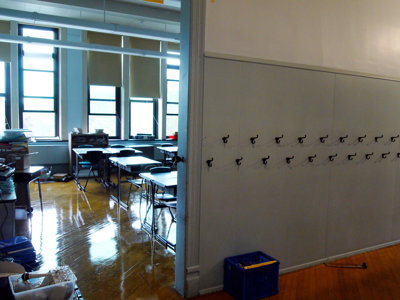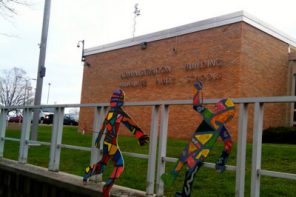Madison’s non-partisan Forward Institute released a report Monday that looked at education funding across the state of Wisconsin and found that over the past decade increasing poverty, deep education cuts, voucher expansion, the economic recession and growing rates of bilingual and special needs enrollment have led to a system that fuels funding and opportunity gaps among Wisconsin students and communities.
“Ultimately what the study reveals is that Wisconsin’s funding formula no longer adequately funds all school districts,” said John Gaier, president of The Association for Equity in Funding (AEF), a group of Wisconsin school districts that promotes financial equity in state school financing and that commissioned the study in 2013. Gaier is the district administrator of the School District of Neillsville.
“This has resulted in widening gaps of opportunities for students and communities. Low property value communities are shouldering a greater burden for funding local school districts. A better funding system is needed for Wisconsin school students to have the opportunities needed for them to be college and career ready, regardless of life circumstances or the community in which they live.”
Using a longitudinal analysis of data from 2004 to 2011, the study set out to answer the question, “Is the education tax and funding system in Wisconsin fulfilling its constitutionally and statutorily mandated function to provide for a sound, basic education for all students regardless of need, without an excessive reliance on local property taxes?”
The report, written by lead author Scott Wittkopf, of the Forward Institute, along with co-author and data analyst Michelle Robinson, a dissertator at UW-Madison’s Department of Sociology, asked four questions:
- Is the trend in public education funding and any disparity based on higher needs students as defined in Vincent v. Voight [student poverty as measured by free or reduced lunch (FRL) rate, English language learner (ELL) rate, and special needs (SpN) enrollment rate] having overtly unequal effects on a specific type of school district? If so, what are the characteristics of those districts?
- Are traditional school finance equity measures such as the McLoone and Verstegen indices sufficient measures of equity and neutrality?
- Is the public education funding system trending away from mandated equity for all students, regardless of need or demographic?
- Is the decline in state aid and increase in student poverty, resulting in a net increase in reliance on local property taxes, in violation of Wisconsin statute 121.01 on education funding?
What Wittkopf and Robinson found, in the words of the report, was:
- The school funding system is depriving many Wisconsin children and communities the resources they need to provide equal educational opportunities; these same communities are being forced to increase property taxes just to provide the basics. The situation has gotten worse over time.
- Because of the unfair funding formula, the more high needs students (poverty, special needs, English language learners) a school district has, the less educational opportunities that are available to all children in that district.
- The inequality of opportunity between different types of school districts with different student populations and community wealth has been getting worse over time – leaving more of our children and communities behind.
- High-poverty schools have significantly lower revenue limits, which deprive them of critical funding for educational opportunities. This negative effect is getting worse over time.
“Our children are being cheated out of a world-class education because we haven’t had the guts to change the way we fund our public schools,” said Tom Beebe, a Forward Institute board member and a partner in the Wisconsin Public Education Network.
“This study is the ammunition the people of Wisconsin need for demanding our elected officials do the right thing. It is our obligation, to ourselves and our kids, to hold them accountable.”
The report offered a range of policy recommendations for Wisconsin politicians:
- Adopt the “Fair Funding” revision of the funding formula proposed by State Superintendent Tony Evers. Dr. Evers’ proposal is a start to addressing many of the funding issues in our report.
- Public subsidization of private schools, which have shown no educational efficacy when socioeconomic factors are accounted for, is contributing to the systemic destruction of public education. These programs should be sunsetted over a 10-year period, with the appropriate funding being restored to the respective affected districts.
- Categorical Aids should be adjusted to address increasing need where appropriate, including increasing free and reduced lunch rate in the overall equalization aid formula.
- Appropriate state revenue should be dedicated to alleviating the overtly high reliance on local property tax revenue where appropriate.
- Revenue limits should be appropriate to address the increasing resources required for higher needs populations, rural schools and cost of operating a high quality public school.
- A bipartisan commitment to the moral responsibility of public education to shape the future of Wisconsin should be acknowledged, as this is not a partisan issue – it is a moral issue.
“Public education is a core value for the people of Wisconsin,” said Beebe. “Our public schools are the heart and soul of every community in the state. Yet, we have a funding system that isn’t supporting those schools and those children.
“As a matter of fact, left to run its course that funding system will bankrupt our school districts and leave our young people well short of our shared goal and responsibility to provide them with a world-class education that protects our communities well into the future.”


 i evaluate to yes even if there's no image
i evaluate to yes even if there's no image  i evaluate to yes even if there's no image
i evaluate to yes even if there's no image  i evaluate to yes even if there's no image
i evaluate to yes even if there's no image  i evaluate to yes even if there's no image
i evaluate to yes even if there's no image  i evaluate to yes even if there's no image
i evaluate to yes even if there's no image  i evaluate to yes even if there's no image
i evaluate to yes even if there's no image 
So when are we going to sue the state about this unfair funding?